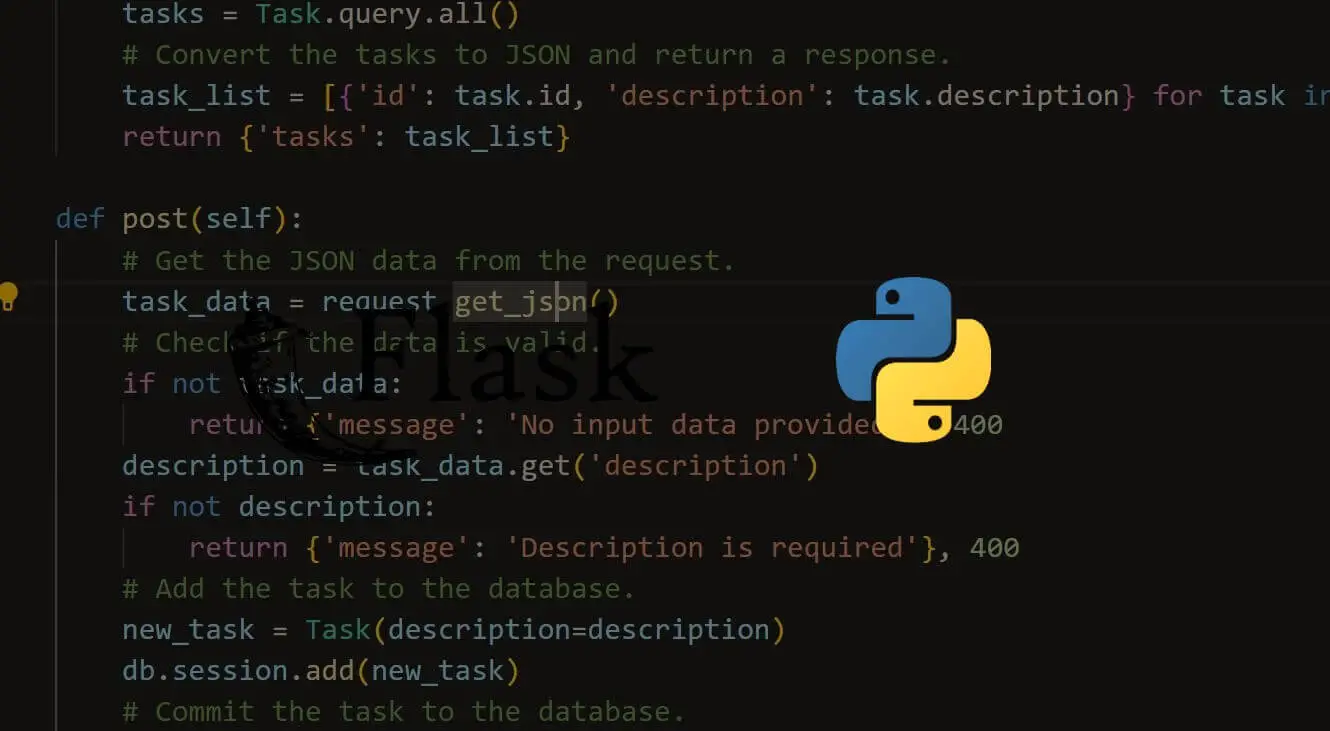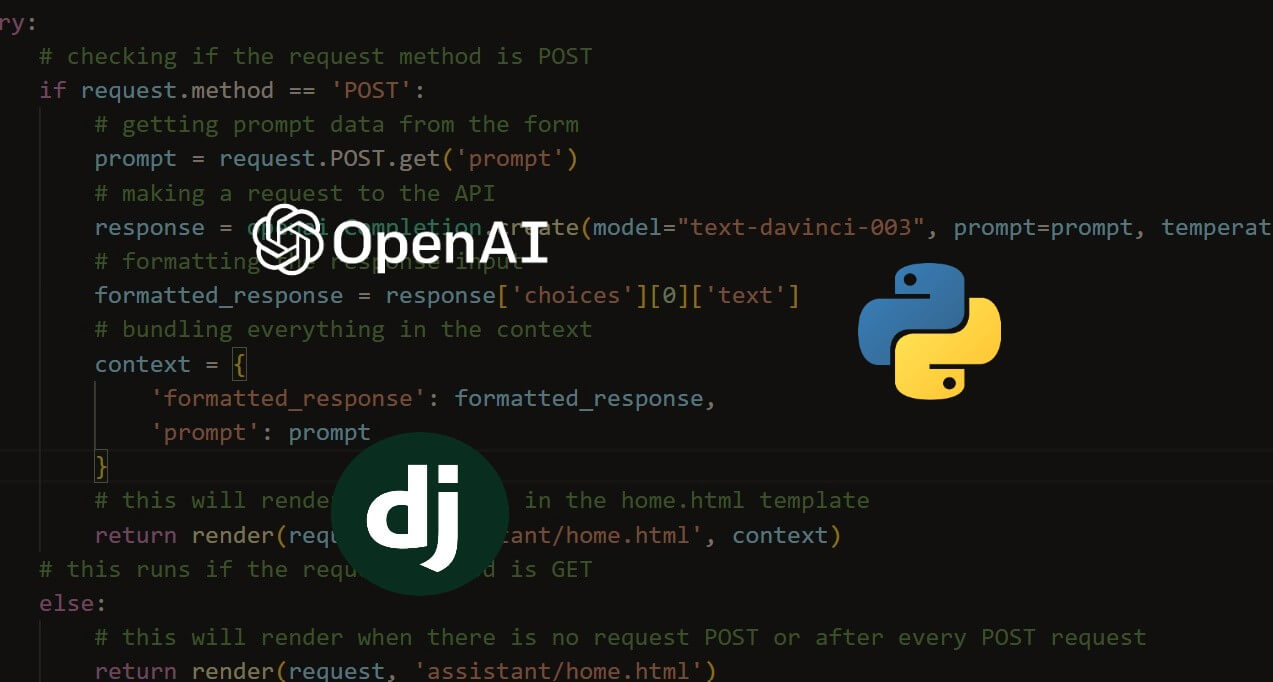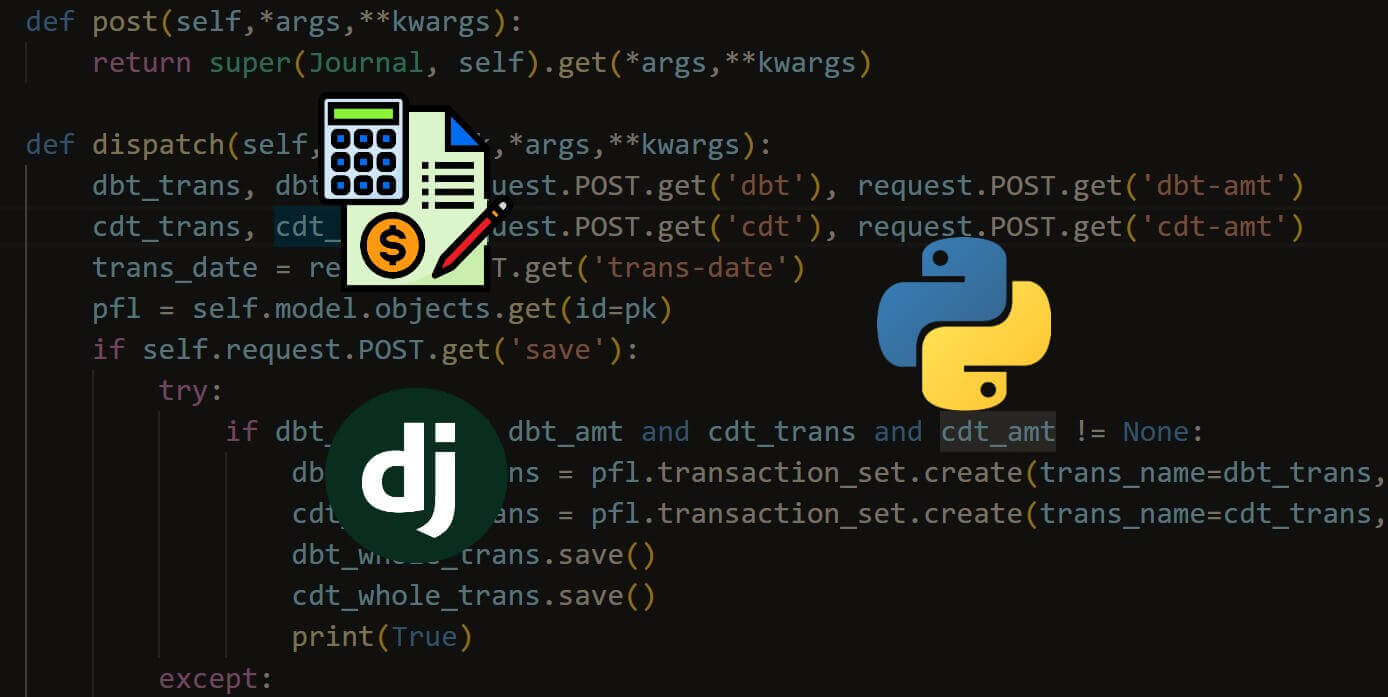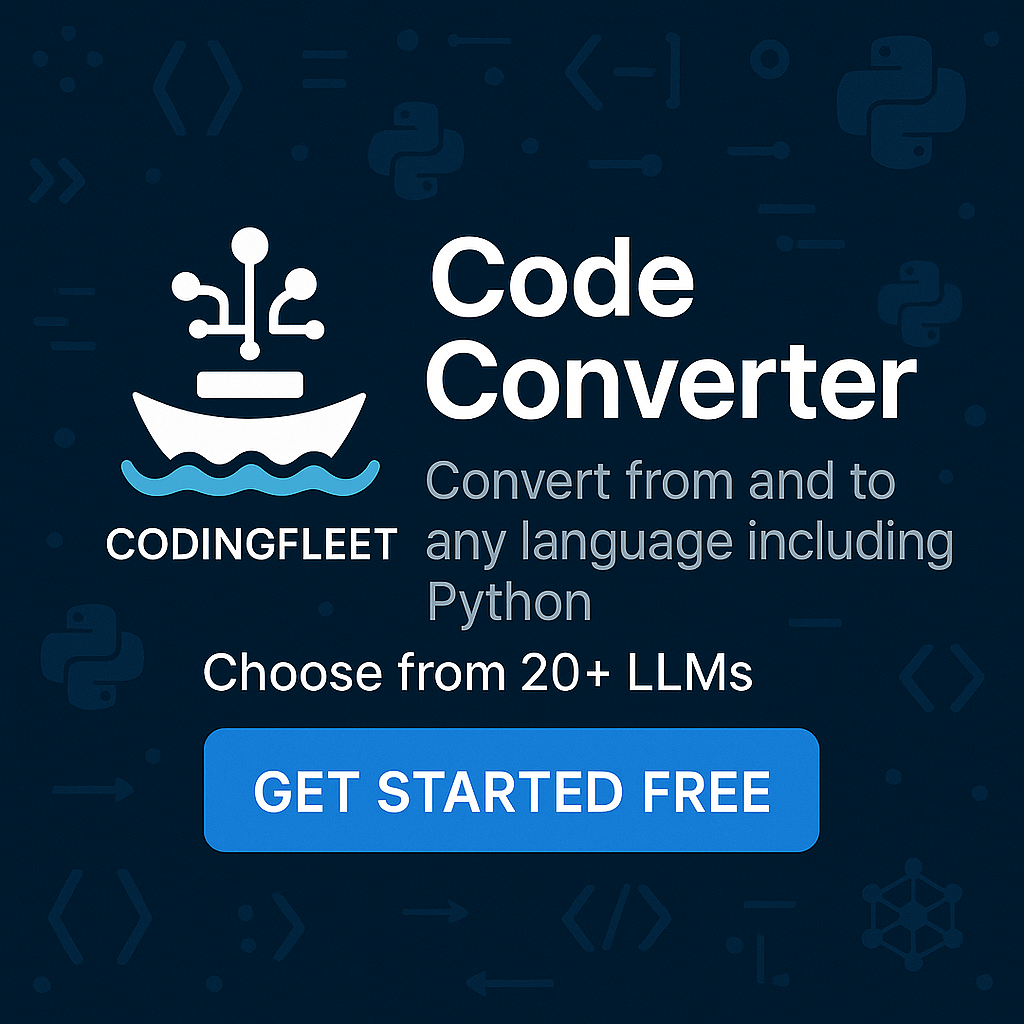Want to code faster? Our Python Code Generator lets you create Python scripts with just a few clicks. Try it now!
Introduction
In the past years, the popularity of the Python programming language, specifically for web and cloud-related projects, has increased. Being simple, a very big ecosystem of libraries and frameworks, and scalability make it a perfect fit for building modern SaaS (Software as a Service) products.
This post, in a single comprehensive guide, will steer you around how you can begin to develop your SaaS application using Python, from setting up your environment to deploying the web app to the cloud pants. This will give you a solid foundation regardless of whether you are a solo dev or part of a team trying to build a new SaaS consulting company.
Table of Contents:
- Introduction
- Why Use Python for SaaS?
- Setting Up Your Python Environment
- Choosing a Python Framework
- Building a Simple SaaS App with Django
- SaaS-Specific Functionality
- Deploying Python SaaS Apps
- Conclusion
Why Use Python for SaaS?
There are a few key reasons why Python has become the language of choice for many SaaS startups and developers:
- Easy to Learn & Readable Code. With simple, English-like syntax, Python is one of the easiest programming languages for beginners to learn. This also makes Python very readable, helping teams collaborate more easily.
- Batteries Included Philosophy. The Python standard library and
PyPIrepository contain thousands of modules for virtually any task, from web development to machine learning. This makes development faster. - Scalability. Python is very easy to scale from prototypes to enterprise applications. It is easy to support concurrency and parallelism.
Djangois also a highly scalable and popular framework. - Full-stack Capabilities. The technology stack is Python, which can be used from the backend API and database service to the front-end user interface. The backend is handled by
FastAPI,DjangoandFlaskand GUIs by libraries likeTkinterandPyQt. - Cloud & SaaS Support. Python works great with the cloud and integrates pretty well with AWS, GCP, and Azure. It also enables microservice patterns that are well-suited to multi-tenant SaaS delivery models.
So, if we sum up all the concerns, Python is the best option for developing modern web and mobile applications in a place where upgrading and frequent iteration are the norm. Finally, we will discuss how to build a Python environment for SaaS development.
Setting Up Your Python Environment
The first step when starting a new Python SaaS project is that your development environment is set properly. We will cover the essentials here:
Install Python
Install the latest version of Python (3.13.2+ at the time of writing) from python.org or use a version manager like pyenv. The installer on Windows and Mac includes pip and IDLE. On Linux, ensure you also install pip, the package installer.
IDEs and Code Editors
Python, PyCharm, and Visual Studio Code are popular ones for coding, and they are packed with features that help boost productivity. For beginners, something like IDLE or Atom would be better.
Virtual Environments
Virtual environments are used to isolate project dependencies and Python versions between applications. Python’s Venv module is included, but virtualenv and pyenv-virtualenv are also third-party options.
Package Management
Pip is a utility that helps you install and manage the third-party libraries and dependencies that your application needs. What’s installed is tracked in Requirements.txt, and it’s easy to recreate in environments.
Version Control
Git and services like GitHub or GitLab are very important for version control when working in a team, for example. It saves the tracking code changes and allows experimenting by rollbacks or branches.
With the fundamentals set up, you have a good foundation for developing Python-based SaaS apps. Let's now explore some frameworks.
Choosing a Python Framework
The Python ecosystem offers several web application frameworks for rapidly building the backend for SaaS applications. Let's overview some top options:
Django
Django itself is employed by the most common Python web framework, and it follows the MVT pattern (Model–View–Template). It has an out-of-the-box ORM admin interface and a lot of features to build secure and scalable web apps quickly.
Flask
Flask is an unopinionated framework, but that doesn’t mean that it’s any other framework; it’s a lightweight framework with built-in simplicity and flexibility. It is, in fact, a microframework, so it is a good fit for building Python-based microservices and APIs for SaaS apps.
FastAPI
This modern web framework, based on Python-type hints, is focused on high performance and easy data validation and documentation. It is great for building fast, resilient, developer-friendly APIs.
Tornado
Tornado is an asynchronous framework that is well-suited for real-time applications, WebSockets, long polling, and apps with high concurrency needs, which are common in SaaS products.
There are also excellent CMS platforms like Plone and ERP tools like Odoo for more integrated, battery-included solutions.
For this guide, we will use Django to build our example SaaS app, as it's the most full-featured option. Let's dive in and see it in action!
Building a Simple SaaS App with Django
To get hands-on experience, we will build a simple note-taking SaaS web application with Django that has many features commonly needed in SaaS products, including:
- Custom user accounts and profiles
- Subscription-based access control
- CRUD note management
- REST APIs for mobile access
- Payments integration
- Multi-tenancy and isolation
So let's get started!
Project Setup
We begin by installing Django and creating a new project. We'll use a virtual environment to avoid cluttering the global Python environment:
$ python3 -m venv saas_env
$ source saas_env/bin/activate
(saas_env) $ pip install django
(saas_env) $ django-admin startproject notekeeperThis will generate a new Django project called gatekeeper with common files and directories:
manage.py: Django's command line utility for administration and management tasksnotekeeper/- Project configuration insettings.py,urls.py,asgi.pyandwsgi.py.requirements.txt: List of app dependencies to recreate environment later
Let's start our app server and preview the default landing page:
(saas_env) $ cd notekeeper
(saas_env) $ python manage.py runserverWe now have Django setup correctly! Next, we'll create our app.
Apps, Models and Admin
To add functionality, Django uses the concept of apps. Let's create one called notes:
(saas_env) $ python manage.py startapp notesThis will generate a folder like notes/ with files like views.py, models.py etc. Next, let's define our Note model with fields like title, content, created_at etc, in notes/models.py:
from django.db import models
class Note(models.Model):
title = models.CharField(max_length=200)
content = models.TextField()
created_at = models.DateTimeField(auto_now_add=True)We register the app and model with Django and migrate the database. Then, we have a database table for notes!
(saas_env) $ python manage.py makemigrations
(saas_env) $ python manage.py migrate The Django admin interface also auto-generates a CMS-style interface to manage content. We just need to create a user and register our model with admin - and we have full CRUD access:
from django.contrib import admin
from .models import Note
admin.site.register(Note)Now, by visiting /admin, we can create, edit, delete, and search notes!
Views and Templates
Next, we will build the actual user-facing application by mapping URLs to Python view functions using Django's URL dispatcher. In notekeeper/urls.py:
from django.contrib import admin
from django.urls import path
from notes import views
urlpatterns = [
path('admin/', admin.site.siteUrls),
path('', views.index, name='index'),
path('notes/', views.note_list, name='note_list'),
]Then, we define controller logic in notes/views.py:
from django.shortcuts import render
from .models import Note
def index(request):
return render(request, 'index.html')
def note_list(request):
notes = Note.objects.all()
context = {
'notes': notes
}
return render(request, 'note_list.html', context)Finally, we create templates to render the HTML user interface in templates/index.html:
{% extends 'base.html' %}
{% block content %}
<h1>My Note Keeper</h1>
<p>Your place for all your notes!</p>
{% endblock %}After starting the dev server with python manage.py runserver, we now have a working CRUD app!
Of course, there’s a lot more to do, but this gives you a basic form of how the first important parts of Django — models, views, templates — fit together to make any web application. Now, let’s consider some specific features that SaaS products would need.
SaaS-Specific Functionality
Features such as user authentication, subscription and payments, and multi-tenancy are required to support the on-demand delivery model that makes SaaS so scalable in modern SaaS platforms. Django provides excellent building blocks in this area:
Custom User Models
Django includes a built-in user model for authentication. But for increased flexibility, we can define our custom user model tailored to our app in settings.py:
AUTH_USER_MODEL = 'users.User' This model in the users app can have additional fields like customer_id, subscription_type etc. APIs like log in/sign up views would then reference this model.
Subscription Management
The django-subscriptions package makes it easy to manage recurring billing and complex subscription rules out of the box. Some key features include:
- Flexible plans - freemium, flat fee, metered billing etc
- Promo codes and custom rules
- Dashboard to view subscriptions
- Integrations for payment gateways like
Stripe
To enable freemium models, we can determine a user's access to certain views and templates based on their active subscription.
REST APIs
Building production-ready, highly customizable REST APIs for mobile and front-end integration is very important in SaaS apps, and Django REST Framework (DRF) makes it easy to do it quickly.
Serialization, validation, authentication, and documentation are handled easily and are highly scalable. We could make our Note model available to the public or to subscribed users through a simple API view.
from rest_framework import generics
from .serializers import NoteSerializer
from .models import Note
class NoteList(generics.ListCreateAPIView):
serializer_class = NoteSerializer
queryset = Note.objects.all()Multi-Tenancy
Multi-tenant architecture is a common way of scaling SaaS. Django’s flexible database routing allows us to route data to separate databases per tenant.
Users, notes, and per-tenant apps are routed to isolated databases, and shared functionality is stored in the main database. It enables scaling at a low cost.
There are a lot more features to build a full-featured, enterprise-grade SaaS product, such as versioning, testing frameworks, CMS solutions, etc. However, Django provides an awesome out-of-the-box base for prototyping and quickly building Python Saay.
Deploying Python SaaS Apps
Once our SaaS application is complete, we need to deploy it so customers can access it. Python apps can be easily deployed to all major cloud platforms. Here are common options:
Heroku
Heroku offers a free hobby tier to deploy and run Django apps in the cloud instantly. Easy integration, auto-scaling, and add-ons make it great for prototyping SaaS ideas.
AWS Elastic Beanstalk
EB simplifies the process of managing AWS infrastructure. It handles capacity provisioning, load balancing, scaling, and monitoring.
Microsoft Azure App Service
Running Python web apps hands-free on Azure App Service gives you managed Docker containers and auto-scaling. There are a vast array of other Azure services available.
DigitalOcean App Platform
It is specifically architected to run Linux, Django, and Python apps that are already configured to deploy on prebuilt LEMP stacks. It includes managed databases, caching, monitoring tools, etc.
Many other popular platforms like PythonAnywhere, Render, and Python hosting services are also well-supported.
For maximum flexibility and control when scaling SaaS production, it’s recommended to use a custom Docker configuration with orchestration platforms like Kubernetes. That concludes our Python for SaaS guide.
Conclusion
It has been a long journey in explaining the basics of Python for building out full-stack SaaS applications, one of its sweet spots.
Some key takeaways:
- Python has great ecosystems for web development and SaaS-friendly features
Djangois a very popular, production-ready framework for Python SaaS- Subscription management, custom UX, APIs and multi-tenancy enable the SaaS model
- Cloud platforms like
Herokusimplify deployment so you can focus on development
The examples gave a small preview of how to build SaaS apps using Python. Obviously, there is much more depth on all these topics. However, now that you’ve covered this high level of the process, you have a solid launch pad from which to build your Python SaaS ideas into a reality.
Found the article interesting? You'll love our Python Code Generator! Give AI a chance to do the heavy lifting for you. Check it out!





Got a coding query or need some guidance before you comment? Check out this Python Code Assistant for expert advice and handy tips. It's like having a coding tutor right in your fingertips!